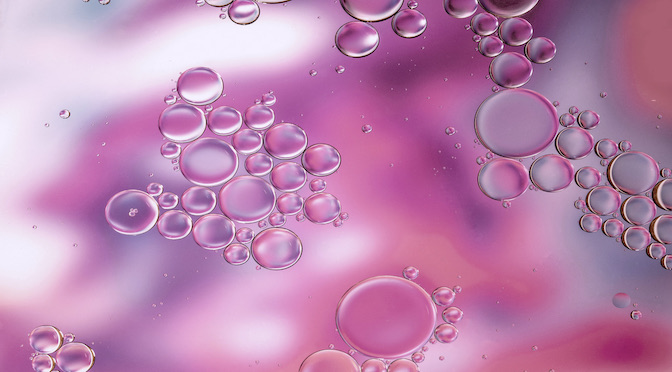Dear Tim, dear Neil,
thank you so much for this huge amount of information in this thread. One of the best threads at WBF! I want to leave my current Audiodesk and change to your bath solution.
Preamble
Cleaning with an array of bath means first inconvenience and costs. First question I ask myself is the WHY. Why do I want to use the US method with separate bath? I want to get the best sound quality. I want to get to lowest surface/groove noise. I want to prevent the stylus best possible from wear. I feel this method is expensive, needs a lot of taking care to the process and it takes time and space. But I feel it is the best. And you have years and decades of experience.
Because a lot of my records are expensive, I want to avoid making mistakes. Therefore I took my time and read the whole 41 pages and worked out the essentials (I leave beside the different side discussions and different methods from other members.) Because I want to start this project the next weeks, I try to condense all information to a summary. Please feel free to correct me if I misunderstood something. I would appreciate getting answers from you to my still open questions. To make it easy my questions are simpe Q with number to answer specific.
Machines and process
The best available ultrasonic quality cleaning bath is the Elmasonic P120H. Easy to get for me here in Germany and relatively cheap here (min. 1860 €) for this quality product. This is the first step.
The USC machine uses both frequencies 37 kHz and 80 kHz.
Q1 to Tim:
Longtime you used 10 min 37 kHz and 10 min 80 kHz. Nowadays you use 10 min alternating 30 sec. 37/80 kHz and 10 min 80 kHz. Do you realize there is a sonic benefit to this new procedure? Or is there another reason changing to this dedicated procedure?
How do you set the program at the Elmasonic menu?
If I get it correctly rinsing is the most essential step of this whole process by solving the residues and getting rid of them.
Not your standard procedure, but I am thinking of adding an additional next step. I buy record protectors (instead of the standard Kuzma rotisserie pads) and I buy a pump pressure garden sprayer. I would put the spindle with records in a plastic box and pre-rinse the records spraying destilled water at the grooves. Makes it easier getting rid of a bigger part of the tergitol solution.
Q2:
Anything speaking against?
The next step is a rinsing bath. You use the S120H. I have seen at Elmasonic webpage they have a newer basic model called Easy 120H. It works with 37 kHz too and costs in Germany 1.125 €. This is a very good price and I see no downside.
Q3 to Tim:
For rinsing the records, why is it essential to use a second bath? Isn’t it sufficient to bath the records in a box of destilled water? Or does the cavitation pushs the bubbles deeper into groove for better rinsing?
To resume the Elmasonic P120H is the best bath for cleaning using double frequency with a lot of power. And the Easy 120H is the go to rinsing bath. So both machines I would buy with confidence due to the longtime experience of Tim.
I have understood from the great book of Neil that success of cleaning depends on frequency, dimension of bath and power of the bath.
I got reports from friends using the Degritter with 120 kHz frequency, they got even superior results to KLaudio and Gläss. Owning them before. Knowing the Degritter power is high and the bath is small. Furthermore I watched several videos from Steve Evans of Perfect Vinyl Forever (the only professional cleaning service specialized in record cleaning at a pro level). After years of development, additional to the essential 40/80 kHz, he feels best results needs reaching the bottom of the groove by 135/220 kHz. But it is hard to get a bath going so high with power and being a quality product. The only good bath would be the Martin Walter Powersonic P1100D HF:
https://www.martin-walter-ultraschalltechnik.de/produkte/powersonic-p-1100
It has 180/360W power, degas and customer support.
I know the statements from Tim and Neil, that the Elmasonic is sufficient. But I could imagine after a while getting experience with both Elmasonic bath to buy a Martin Walter as second cleaning step. To get an even better result. Maybe, maybe not.
Recipe
Q4 to Tim:
You used longtime Ilford Ilfotol. What was the reason? Simply cheaper or better results or availability?
Now I understand Tergitol 15-S-9 is the surfactant and detergent with best results and longtime experience. But the mixing ratio is one of the most important decisions overall.
Q5:
If I use Tergitol as surfactant and detergent, would 0,015% be the right concentration? 0,015% = 0,15ppt = 150 ppm, correct?
The bath has 12.700 ml. If I would take 2 ml, that’s 2/12.700 = 0,000157 = 0,157 ppt.
Q6 to Tim:
Nowadays you returned using 99% IPA at 2% (~254 ml) again. Can you hear any sonic benefit or is the drying cycle faster or what is the reason for the additional IPA?
The cleaning steps are degas/filtering, cleaning 37/80 kHz, cleaning 80 kHz, rinsing, drying.
Q7 to Tim:
Are 10min rinsing enough or better 20 min? Preparing a bath do you add first IPA followed by Tergitol or better opposite order?
Miscellaneous
I plan to clean 5 records each cleaning cycle.
Q8:
Would a distance of 1 inch be sufficient or do I need to keep 1,5-2 inches?
Q9 to Tim:
Longtime you warmed the bath to 30 °C, but you stopped this warming. Temperature is getting to high or no need of 30°C because 22°C is warm enough?






